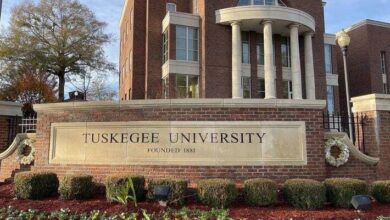
28-year-old Bryan Kohberger is linked to the murders of four University of Idaho students by DNA evidence found at the crime scene, say police investigating the case.
Kohberger was arrested in Pennsylvania on Friday, more than six weeks after the Nov. 13 murders of Ethan Chapin, 20, Madison Mogen, 21, Kaylee Goncalves, 21, and Xana Kernodle, 20, in a Moscow, Idaho rental house. After he was read the murder and burglary charges against him, he appeared in court on Thursday.
Jason A. LaBar, Kohberger’s court-appointed public defender in Pennsylvania, told the Today show that Kohberger has maintained his innocence: “He said this is not him, he said he believes he is going to be exonerated.”
The small college town was stirred into a panic as they waited for more information on the case and the identification of a suspect. Authorities zeroed in on Kohberger using DNA even as he returned to his family’s home state in December, as detailed in newly released court filings.
This is how they did it.
Kohberger was identified by investigators using DNA.
An affidavit made public on Thursday showed that authorities were able to find DNA of a single male source on the button of a knife sheath near one of the victims.
Investigators linked a vehicle they believed to be the suspect’s, to Kohberger, using surveillance video and cell phone location.
A warrant was obtained to go through trash from Kohberger’s family home in Pennsylvania. DNA was obtained from the trash and it was identified with a high level of probability as belonging to the biological father of the person whose DNA was on the knife sheath.
According to Daniele Podini, chair of the Department of Forensic Sciences at The George Washington University, the methods and technology used to arrest Kohberger were conventional DNA profiling techniques using what’s known as Single Tandem Repeat (STR) analysis, used for everything from identifying criminal suspects to conducting paternity tests.
What kind of DNA can be used to profile a potential killer?
DNA can be deposited at a crime scene through saliva, blood, and sweat and is present in every cell in the body.
San Francisco police vowed to stop using victims’ DNA, but they continued to do so.
Podini said the DNA found on the knife sheath could have come from a number of different types of cells, including what’s known as touch or trace DNA, which involves a small amount of skin cells.
When we touch an object, we leave some of our cells behind. “There may be some skin cells and there may be saliva cells because we just coughed on our hand,” Podini said.
To what extent did they link DNA to the suspect’s father?
Each person gets half of their DNA from their mom and half from their dad.
“Like a plastic spoon or a razor blade,” said Podini, investigators likely used items from the family home’s trash that came into contact with a single person to extract and analyze the DNA on them.
“For every region they analyzed, half of that was present in both individuals,” said Podini, regarding the finding of a profile consistent with being the biological father of the DNA profile obtained from the knife (sheath).
“Today, researchers are focusing on improving the type of information that can be gleaned from a genetic profile,” said Podini. “For example, they are aiming to determine someone’s eye color or skin pigmentation.” A technique called DNA methylation, which is currently being refined, can determine the age of a person from whom a sample was collected. Scientists want to come up with more accurate methods to analyze DNA mixtures when multiple people’s DNA are found on surfaces.
has made it easier than ever to track down ancestors
Thanks to genealogy sites, it’s now easier than ever to track down ancestors.
The arrest and capture of the “Golden State Killer” in California, who operated in the 70s and 80s and was arrested in 2018, is one example of how technological advancements in DNA forensics and the rise of genealogy sites such as 23andMe and Ancestry.com have led to the solving of decades-old cases.
Police had a DNA sample from an old crime scene but no suspect to match it to. They conducted a familial search decades later using a public database of records from private testing companies uploaded by people who hope to find matches with potential relatives.
After constructing a family tree of the potential relatives of people the original DNA sample matched, they narrowed down the suspects by the suspected age of the killer and known location at the time of the killings. This led to Joseph James DeAngelo pleading guilty.
More traditional analysis using STRs is done after a suspect is identified through that process, usually obtained through a warrant, between the sample from the crime scene and a new sample from the individual suspect. DeAngelo’s DNA was obtained by the police through wiping his vehicle door handle while he was inside a store.
Podini said that the way investigators found the Golden State Killer and the suspect in the Idaho slayings was quite different because of the different DNA analysis methods used involving different technology and sets of genetic markers. Kohberger will have his DNA compared to what was found on the knife sheath to confirm a perfect match, said Podini.





